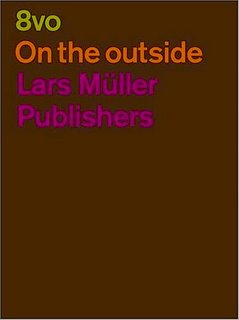
8vo On the outside
Over my lifetime I have had a number of moments when I felt like I saw things with crystalline clarity: one time was when I was in the library doing a job search in the papers (this is pre-Monster.com kids).I suddenly came to the conclusion that even if I got a job that I would be in the same cycle soon again and I needed to get out of the blue-collar roles, even if it meant leaving vast tracts of my life behind.
The next one was in April 2000, the internet business had gone mental, the PR agency I was employed in was in mid-flow of the dot.com boom and all the mini-bubbles that went alongside it like the Java boom, the Linux boom, the broadband boom, the web business marketplace boom, the mobile web boom and rise of the PDA.
In fact, about the only thing that we didn’t promote was micro-scooters, though we did employ a German freelancer who commuted in from Brighton and rode one everywhere he had to go around London.
Anyway, things got so busy that we had to interview clients and decide whether we wanted to work for them. I met a gentleman from an incubator fund and quickly decided that they were start-up roadkill, but I couldn’t work out why this man who was obviously a lot more clever than me was involved in the enterprise.I asked him what made his companies offering different, to which replied “Ged, I am surprised that you asked that, we are trying to move at internet-speed, so aren’t thinking about things like that.” I had a sudden jolt of crystalline vision and saw how horribly it was all going to end and that my pension fund wasn’t worth squat. The elemental truth in this moment is that common sense trumps eloquent words and intellect every time.
Which brings me on to 8vo On the outside by Mark Holt and Hamish Muir. Steve bought this for me as a Christmas present and up until my move from Yahoo! and move back to agency life I hadn’t really had a chance to read the book in full.
The book charts the rise and fall of the design agency 8vo, their work and puts into context their pivotal role in modern UK graphic design.
The book is a collaborative work written by 8vo, former employees, former clients and industry observers. It is part history lesson focusing on design and the business of design, part a tale of technological change and part catalogue.
The way the book is written it is almost as if it is therapy for Hamish Muir and Mark Holt, I found it in turns fascinating and uncomfortable as they progressed through their work and found some elemental truths in their approach to design.
Much of their style of work has been co-opted by their modern day peers, so it is no longer remarkable, however what their peers lack is a good understanding of their approach to work. More book reviews here.
Iain Tait over at Crackunit had a link to an interesting interview with Eric Reiss who learned the same elemental truths as 8vo, but via a different road: in his case Vinterberg and Von Tier’s Dogme 95 rules for film making.
- Anything that exists only to satisfy the internal politics of the site owner must be eliminated.
- Anything that exists only to satisfy the ego of the designer must be eliminated.
- Anything that is irrelevant within the context of the page must be eliminated.
- Any feature or technique that reduces the visitor’s ability to navigate freely must be reworked or eliminated.
- Any interactive object that forces the visitor to guess its meaning must be reworked or eliminated.
- No software, apart from the browser itself, must be required to get the site to work correctly.
- Content must be readable first, printable second, downloadable third.
- Usability must never be sacrificed for the sake of a style guide.
- No visitor must be forced to register or surrender personal data unless the site owner is unable to provide a service or complete a transaction without it.
- Break any of these rules sooner than do anything outright barbarous.
Oh one completely useless piece of information that I found out today, the ZIP in ZIP code stands for Zone Improvement Program.
